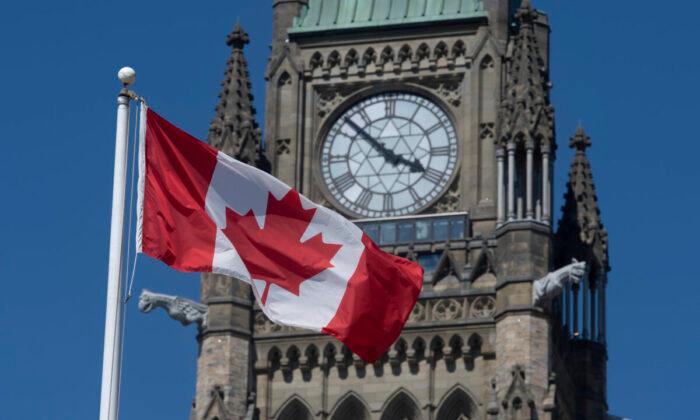Debt and Taxes
Canada’s budget deficits and public debt shot up during the pandemic, but now reductions in both are underway. The OECD says “Canada fares better than most countries in this regard.”Nevertheless, the OECD says government spending has to complement the central bank’s fight against inflation in tempering demand.
The OECD reports that the consolidated fiscal deficit across all levels of government peaked at 11.4 percent of gross domestic product (GDP) in 2020 but is estimated at 0.6 percent for 2022—lower than that of the United States and European Union.
A key OECD recommendation is that the federal government must “maintain a credible medium-term plan for lowering federal government debt“ that should include ”the detailing of spending efficiency plans.”
The OECD explains that the spending reductions announced in Budget 2022 were later attributed to lower-than-expected demand for certain COVID-19 programs and thus would not be considered active policy to increase public spending efficiency—an issue underscored by the Parliamentary Budget Officer.
The OECD points out that Canada has “more headroom for increasing consumption tax than many other countries.” This is due to the combined rates of federal GST and provincial equivalents being low relative to many other OECD countries.
“Tax reforms and improved public spending efficiency could boost growth potential and sustainably lower the fiscal deficit,” according to the OECD survey. “There is scope for improving the tax mix.”
Facing rising living costs, the OECD warns about broad measures that fail to target the most vulnerable. But even targeted measures, if sustained for a long time, have downsides, the OECD notes.
Improving Growth and Productivity
To improve economic growth and productivity, the OECD recommends that Canada reduce the trade barriers and regulations between provinces while increasing competitiveness such as by tackling foreign ownership restrictions. Competition law must also change to handle challenges related to Big Tech, such as barriers to entry linked to data access and abusive practices. The OECD also identified corruption and economic crimes such as money laundering as problematic for Canada’s business environment.Canada is still reeling from the slump in resource-sector investment following the 2014 oil price collapse, which has been central to the drop in business investment and corresponding weakening in productivity.
The OECD provides several suggestions for increasing business-sector productivity like tax breaks on investment and R&D, improvements to infrastructure and market efficiency, and reforms that strengthen vocational training.
Regarding barriers to foreign direct investment, the OECD points out that Canadian telecommunications rules mandate that both ownership and board composition must be at least 80 percent Canadian for operators with more than a 10 percent share of the market.
“The need for such restrictions should be evaluated as part of the ongoing review of the sector.”
The OECD notes that Canada’s GDP per capita has advanced more slowly than leading economies in recent years, and the gap with the United States has widened.
“Removing barriers to internal trade and ensuring sound competition policy for big tech companies would help raise investment and productivity, and thus incomes.”
Interprovincial trade barriers include things like differences in technical standards and regulations between provinces that slow down the flow of goods and services, and non-recognition of certain qualifications between provinces.





